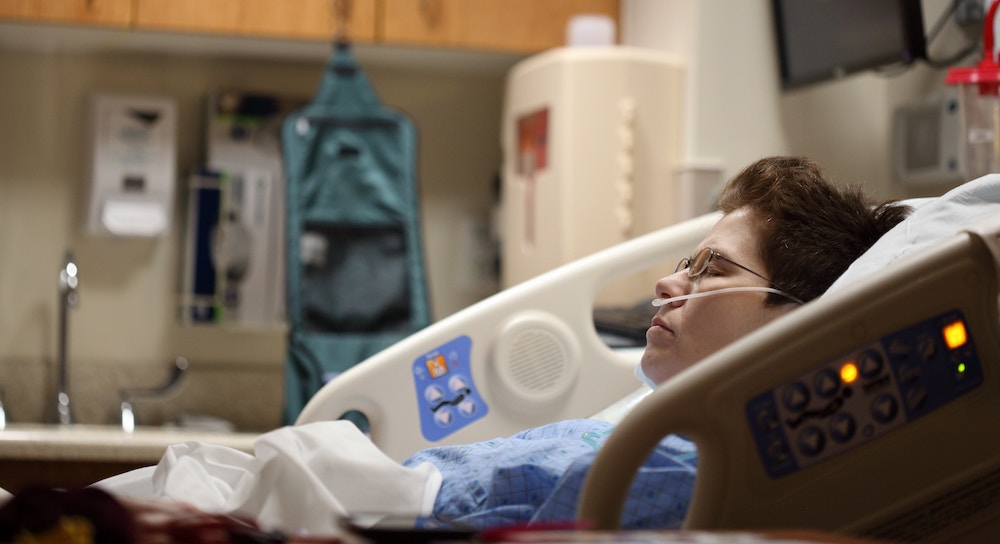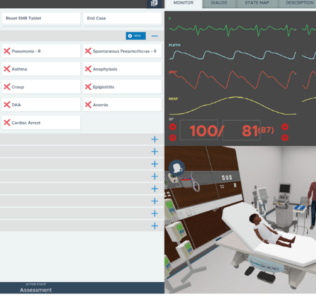Physiology: The Force Behind Healthcare Simulation – A Guide for Techs, Part 3: Pulse Oximetry
Simulation team members may have a limited background in physiology or medicine. An understanding of basic physiological concepts can enable non medical simulationists to better understand medical simulation. This article is part 3 of a series of posts related to physiology. Although traditional vital sign measurement includes blood pressure, temperature, pulse (heart rate) and respirations, a fifth vital sign pulse oximetry (oxygen saturation) is now widely used to provide information on blood oxygen levels. (Note: See the entire series linked at the bottom of this article).
As all body tissues need oxygen, measurement of oxygen levels can provide vital information about the oxygenation status of a patient. An arterial blood gas (ABG) can provide detailed information about oxygenation, ventilation and acid-base levels however, an ABG is an invasive procedure that provides a single snapshot of the patient’s condition. The advantage of pulse oximetry is that it can measure blood oxygen saturation non-invasively and continuously.
- What is blood oxygen saturation?
- The percentage of hemoglobin molecules in the arterial blood which are saturated with oxygen(SaO2) or when measured with pulse oximetry (SpO2)
- Normal readings in a healthy adult range from 94% to 100%.
- Physiology
- Oxygen is found in the blood in two forms
- Bound to hemoglobin (oxyhemoglobin)
- Hemoglobin is a transport molecule that picks up oxygen in the lungs and then moves around the body dropping off the oxygen where it is needed.
- Dissolved in the blood.
- Bound to hemoglobin (oxyhemoglobin)
- Hemoglobin
- Functional hemoglobin which can bind and release oxygen
- Nonfunctional hemoglobin – either does not carry or release oxygen.
- Carboxyhemoglobin
- In carbon monoxide poisoning, carbon monoxide binds to hemoglobin.
- Methemoglobin – a type of hemoglobin that does not give up its oxygen.
- Carboxyhemoglobin
- Oxyhemoglobin dissociation curve. The partial pressure of oxygen dissolved in blood is known as PaO2. The percent of oxygen bound to hemoglobin in arterial blood is termed the SaO2. The relationship between the SaO2 and PaO2 is found in the oxyhemoglobin dissociation curve.
- In general, oximeter readings provide information about the partial pressure of oxygen in arterial blood. Therefore the oximeter is used as an indicator of tissue oxygenation.
- Oxygen is found in the blood in two forms
- How an oximeter works
- A pulse oximeter consists of two main components a peripheral probe attached to a microprocessor.
- The probe consists of a photo detector and two light emitting diodes.
- The diodes emit light of two different wavelengths. Information from the detector is integrated in the processor to determine the amount of saturated hemoglobin as a percentage of total arterial hemoglobin.
- Since the arterial signal is pulsatile, a waveform is generated which is displayed on the microprocessor. Heart rate (pulses per minute) is displayed as well as the oxygen saturation levels.
- Alarm limits may be set. A higher pitch sound indicates a high oxygen saturation and a lower pitch indicates lower levels.
- Ideal Site for oximeter probe:
- Well perfused
- Relatively immobile
- Comfortable for the patient
- Easily Accessible
- Fingers, ears, toes
- Cheek, tongue, nose when there is poor peripheral perfusion.
- The probe should be the correct size, not be too tight and maybe held in place with tape.
Sponsored Content:
- Problems with oximetry.
- Nonfunctioning hemoglobin:
- Carboxyhemoglobin can lead to falsely high oxygen saturation readings.
- Elevated levels of methemoglobin can cause a falsely high or low oxygen saturation level.
- Note newer pulse oximeters are able to distinguish between carboxyhemoglobin and methemoglobin.
- Anemia
- Damage to red blood cells may cause anemia, a lack of red blood cells and thus hemoglobin in the blood. An anemic patient may not have enough functioning hemoglobin in the blood to oxygenate the tissues. The small amount of functioning hemoglobin in the blood may be well saturated with oxygen, so the patient may have a normal SpO2 reading, but the patient may not have enough oxygen going to the tissues.
- Dyes – common dyes used for diagnostics will interfere with the pulse oximeter readings
- Methylene blue
- Indiocyanine green
- Indiocarmine
- Bilirubin, a breakdown product from red blood cells, does not affect readings from pulse oximeters.
- Peripheral vasoconstriction, hypoperfusion, cyanide poisoning, COPD, hypothermia and shock can all affect the accuracy of oximeter accuracy.
- In the above situations, blood is shunted away from peripheral areas resulting in potential errors in oximeter readings.
- Bright lights and movement may interfere with readings
- Incorrect probe placement.
- Too loose – the light may not pass through the tissue correctly or the emitter and detector probes not line up properly.
- Nail polish may block the oximeter.
- Nonfunctioning hemoglobin:
Pulse oximetry has become commonplace in medicine today however, it is important for learners to understand how to use the oximeter and to know the possible causes of false readings.
Read the Entire Physiology: The “Force” Behind Healthcare Simulation HealthySimulation.com Article Series:
- Part 1: Blood Pressure
- Part 2: Heart & Respiratory Rate
- Part 3: Pulse Oximetry
- Part 4: Diabetes
- Part 4B: Hypoglycemia & Excel Template for Simulated EHR
- Part 4C: Insulin
- Part 5: Sepsis
- Part 6A: Hypovolemia (Intro)
- Part 6B: Hypovolemia (Treatment & Simulation Tips)
- Part 7A: IV Fluids & Bags
- Part 7B: IV Pumps & Site Access
- Part 7C: PCA for Pain
- Part 8: ABGs
- Part 9: Sepsis Labs
Today’s article was guest authored by Kim Baily PhD, MSN, RN, CNE, Simulation Coordinator for Los Angeles Harbor College. Over the past 15 years Kim has developed and implemented several college simulation programs and currently chairs the Southern California Simulation Collaborative.
Have a story to share with the global healthcare simulation community? Submit your simulation news and resources here!
Sponsored Content:
Learn more about Physiology The Force Behind Simulation – Pulse Oximetry.!
Dr. Kim Baily, MSN, PhD, RN, CNE has had a passion for healthcare simulation since she pulled her first sim man out of the closet and into the light in 2002. She has been a full-time educator and director of nursing and was responsible for building and implementing two nursing simulation programs at El Camino College and Pasadena City College in Southern California. Dr. Baily is a member of both INACSL and SSH. She serves as a consultant for emerging clinical simulation programs and has previously chaired Southern California Simulation Collaborative, which supports healthcare professionals working in healthcare simulation in both hospitals and academic institutions throughout Southern California. Dr. Baily has taught a variety of nursing and medical simulation-related courses in a variety of forums, such as on-site simulation in healthcare debriefing workshops and online courses. Since retiring from full time teaching, she has written over 100 healthcare simulation educational articles for HealthySimulation.com while traveling around the country via her RV out of California.
Sponsored Content:






















